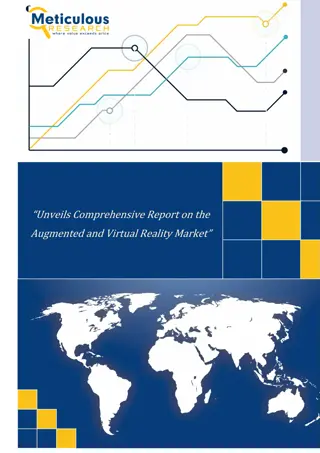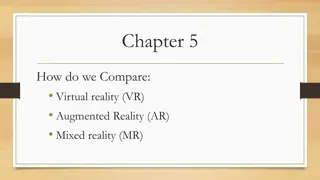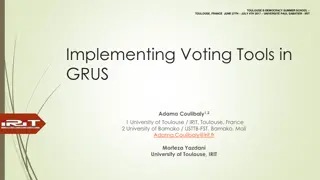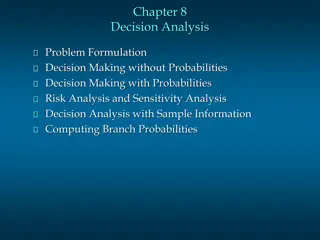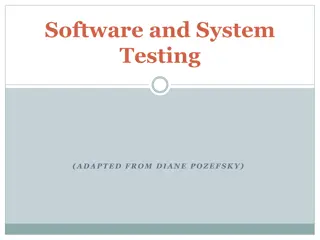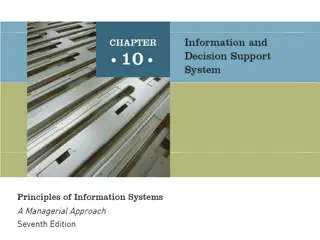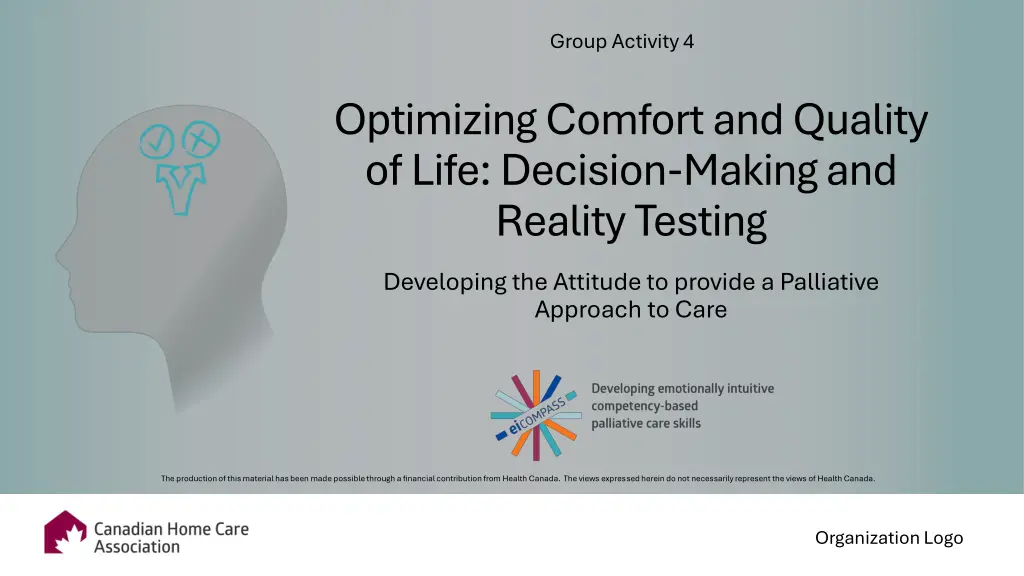
Emotional Intelligence in Palliative Care Decision-Making
Enhance patient care by incorporating emotional intelligence in decision-making processes within palliative care. Understand the impact of emotions on decision-making, recognize biases, and strive for a balanced approach between the emotional and logical brain. Develop the ability to manage emotions effectively for better outcomes and improved quality of care.
Download Presentation

Please find below an Image/Link to download the presentation.
The content on the website is provided AS IS for your information and personal use only. It may not be sold, licensed, or shared on other websites without obtaining consent from the author. If you encounter any issues during the download, it is possible that the publisher has removed the file from their server.
You are allowed to download the files provided on this website for personal or commercial use, subject to the condition that they are used lawfully. All files are the property of their respective owners.
The content on the website is provided AS IS for your information and personal use only. It may not be sold, licensed, or shared on other websites without obtaining consent from the author.
E N D
Presentation Transcript
Group Activity 4 Optimizing Comfort and Quality of Life: Decision-Making and Reality Testing Developing the Attitude to provide a Palliative Approach to Care The production of this material has been made possible through a financial contribution from Health Canada. The views expressed herein do not necessarily represent the views of Health Canada. Organization Logo
Group Activity 4 Emotional Intelligence (EI) and Palliative Care Emotional intelligence is the ability to understand use use your own and other people s emotions to recognize and react in helpful ways to make a positive difference. (D. Goleman, 1995) understand, manage manage and When you use EI in your decisions you can: Enhance patient care Boost your confidence and self-esteem Provide a palliative approach to care Emotional intelligence is helpful in managing the emotions that arise from the caring process (e.g. sadness, grief, anxiety, anger, stress and burnout). Cherry et al, 2014. Organization Logo
Group Activity 4 Exercise 5 4 3 2 1 Decision Decision- -Making Self Making Self- -Assessment Assessment Never Seldom Sometimes Frequently Always 1. When I'm really upset, I can t decide what to do. 2. It s hard for me to decide on the best solution when solving a problem. 3. I get stuck when thinking about different ways of solving problems. 4. If I have trouble solving a problem, I get frustrated and give up. 5. I avoid dealing with problems. 6. I let my emotions get in the way when making decisions. 7. I am unaware when my emotions affect my objectivity. 8. I have a difficult time recognizing my own biases. 9. I tend to react hastily. 10. I make rash decisions when I m emotional. Organization Logo
Group Activity 4 The Emotional Brain Sentis, November 2012 Organization Logo
Group Activity 4 How our Brain Controls Decisions and Actions Rational / logical brain Rational / logical brain (neocortex) only plays one part in our decisions and actions. Emotional brain Emotional brain (limbic system) is the big driver for our decisions and actions. The amygdala (part of the limbic system) produces hormones when we sense something threatening, highly threatening, highly emotional or stress emotional or stressful ful. These cause use a flight or fight response and we react without we react without engaging our rational brain. engaging our rational brain. Organization Logo
Group Activity 4 Balancing our Emotional and Logical Brain When calm, our emotional and logical brain work together in balance. When we feel intense emotions or stress our emotional brain takes over and acts without using the logical brain. We just act and don t take the time to evaluate information and choose the best option. Logical / Rational Brain (Neocortex) Logical / Rational Brain (Neocortex) Emotional Brain (Limbic System) Emotional Brain (Limbic System) Logic and reasoning Emotion and intuition Engages in reflection Stimulates quick action Regular meditation can thicken the prefrontal cortex, strengthening your rational brain. This enhanced rational brain function helps you better manage your emotional responses, making it easier to stay calm and make well-thought-out decisions under pressure. Source of beliefs and rules Source of habits, cravings, and instincts Manages emotions Interprets emotions as feelings Not always engaged Always engaged Can overrule the emotional brain Feeds into the rational brain guiding its operations Can be trained to recognize and manage emotional responses Can overtake the rational brain when emotions are running high Organization Logo
Group Activity 4 Reality Testing "In matters of health, it is vital to recognize the difference between what we wish to be true and what is actually true. Atul Gawande. Reality testing is a crucial skill that involves matching your perceptions and beliefs with the actual facts. Organization Logo
Group Activity 4 Practice Reality Testing Skills- Get the F.A.C.T.S. F Face your assumptions Acknowledge and become aware of your biases. A Assess the evidence. Evaluate the facts and look for objective information to verify or challenge your biases. C Consider different perspectives. Include different points of view and think about how they shape your understanding of the situation. Using the F.A.C.T.S approach can help ensure your decisions are grounded in objective information and a clear understanding of the situation, ultimately supporting the patient's comfort and quality of life. F.A.C.T.S T Test your assumptions. Put your beliefs or biases to the test by asking for feedback. S Stay open-minded. Be open to new information and be willing to adjust your views. From Cedars-Sinai.org Organization Logo
Group Activity 4 Emotional intelligence (EI) significantly enhances decision-making in palliative care by allowing healthcare providers to effectively manage their emotions and understand those of patients and caregivers. This empathetic understanding is crucial for making informed and compassionate decisions that align with the best interests of patients and their families, ultimately improving care outcomes and satisfaction. The production of this material has been made possible through a financial contribution from Health Canada. The views expressed herein do not necessarily represent the views of Health Canada. Organization Logo




